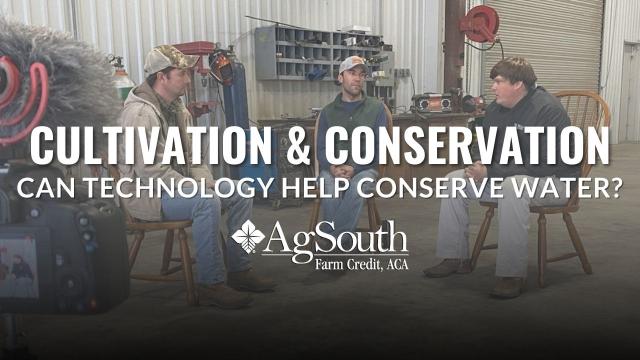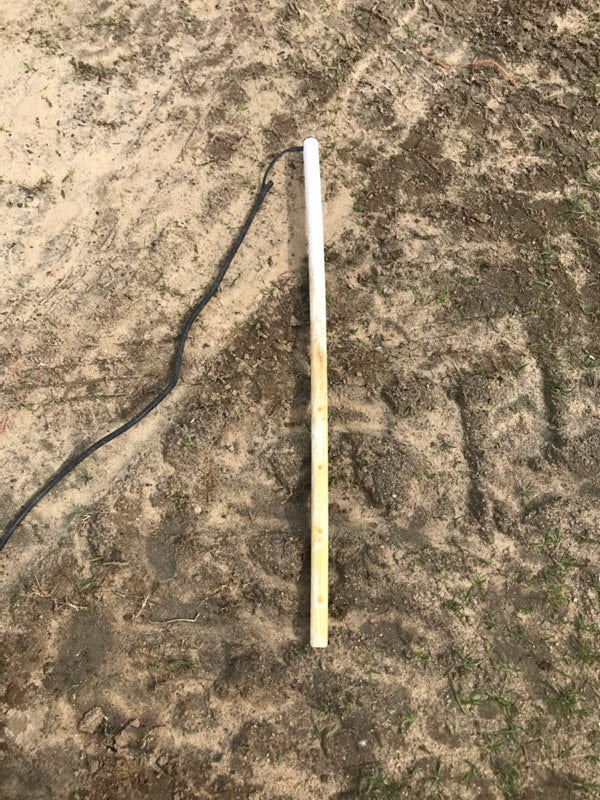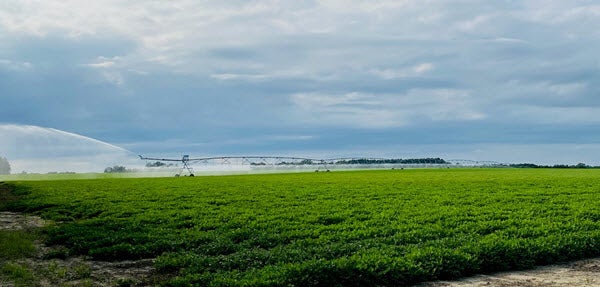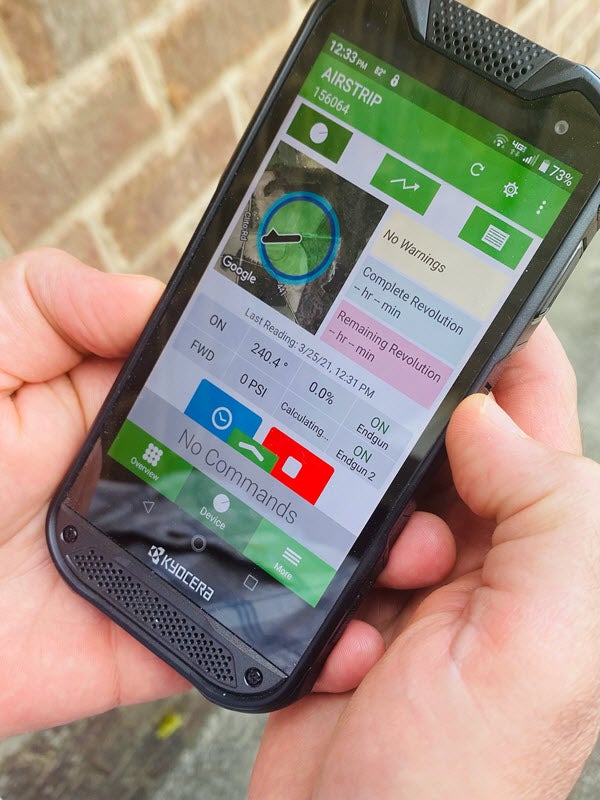Cultivation & Conservation: Can Technology Help Conserve Water?

Southeast Georgia farmers David Cromley, JD Newton, and Ryne Brannen each farm cotton and peanuts with their families. All in their 30’s, these young farmers are driven to grow the highest quality crops they can, in an environmentally conscious way, that is also sustainable for their farm business to pass down to another generation of farmers. Hear their conversation about water conservation – and how technology plays an important role.
The Real Conversation: Can Technology Help Conserve Water?
With “conservation” and “sustainability” such a hot topic of discussion, who better to ask than the farmers themselves what they are doing to take care of our natural resources?
Farmers operate every day with the motto shared by farmer JD Newton, “If we take care of the land, the land will take care of us.” Farming IS sustainable because it’s still here! And farmers – as stewards of the land – are the ultimate conservationists. Farmers are already part of the solution to A. making sure the environment is taken care of, and B. feeding our growing world.
Southeast Georgia Farmers Weigh In
Southeast Georgia farmers David Cromley, JD Newton, and Ryne Brannen each farm cotton and peanuts with their families. All in their 30’s, these young farmers are driven to grow the highest quality crops they can, in an environmentally conscious way, that is also sustainable for their farm business to pass down to another generation of farmers.
Our last segment covered What is Sustainability?
There are many practices farmers have implemented that are helping to sustain our natural resources, and being smart and conservative with water use is near the top of the list. In fact, you may be both surprised and fascinated at what technology is available to farmers to help them manage – and in fact minimize – their water use.
Moisture Sensors Are Used to Measure Water Levels in Soil
We’ve all had those tomato plants that burned up in the dry, hot summer. We get busy, it gets hot, and the rain just doesn’t come. So we never get to enjoy a juicy red tomato from our back yard.
Can you imagine scaling your garden to 1000 acres? The worry and stress of making sure the plants have water so they can make a crop would be tremendous, especially if you depended on selling that crop to feed your own family.
Farmers have experienced that pressure since the beginning of time, and it’s the weather they worry about the most. Irrigation is the risk protection farmers have used for decades to protect against crop loss from drought. But over-use of water has been a public concern for years as well.
Soil types across the US vary greatly, and in Southeast Georgia they are more sandy, a soil type that tends to allow water to drain quickly. When rain falls on a field, especially when it comes hard and fast, it is impossible to tell how much actually soaked down into the soil and how long it will stay there.
Soil moisture sensors, a relatively new technology, can help farmers tell precisely when and how much to irrigate, or water, their crops. By measuring how much water is in the soil for plants to use, farmers can more accurately schedule when and how much to irrigate. David Cromley states, “I’ve seen a lot of benefit from knowing just when – and especially when not – to water.”

The power bill to run an irrigation pivot is also a tremendous cost to the farm, so sensors help minimize the number of times they need to run. Running one pivot, one time, in one field, to put out one inch of water, can costs hundreds of dollars.
JD Newton explains, “We don’t want to turn it [irrigation pivot] on just because we have it. That’s irresponsible from an environmental standpoint and from an economic standpoint.” Ryne Brannen adds, “Not only are you wasting water and electricity, you can actually hurt your crop and reduce your yield by watering it too much or when it doesn’t need to be watered.”
Irrigation Pivots Can be Managed from a Cell Phone
Farmers routinely spend a lot of time in the summer driving around to monitor their irrigation pivots. They often find the well pumping water through the pivot shut off prematurely, a pivot stopped in the middle of the field overwatering in one spot, clogged sprinklers that block water on a section of the field, etc. With fields spread out, monitoring pivots can take hours a day and a tremendous amount of fuel.

Much like your ability to control your thermostat or home security system from your phone, farmers can see and control their pivots remotely at any point in time! They can monitor where the pivot is in the field, see if it’s running or stopped, if the well has shut off on time, or not.

Phones can even alert them if there is a problem, so farmers know immediately when they need to shut a pivot down to save water. This real-time monitoring ensures no excess water or electricity is wasted waiting on them to drive to the field and find the problem.
Additionally, if moisture sensors indicate sufficient water in the soil or rain is showing on the radar, farmers can shut down the pivot and not apply unnecessary water.
As David says, “Knowledge is power.” Technology allows farmers to know more than ever before about what’s going on in their fields – so they can make minute-by-minute decisions that conserve water, save money, and save time.
Sounds like we all win.
Stay tuned for another segment on Cultivation & Conservation – the Real Conversation.